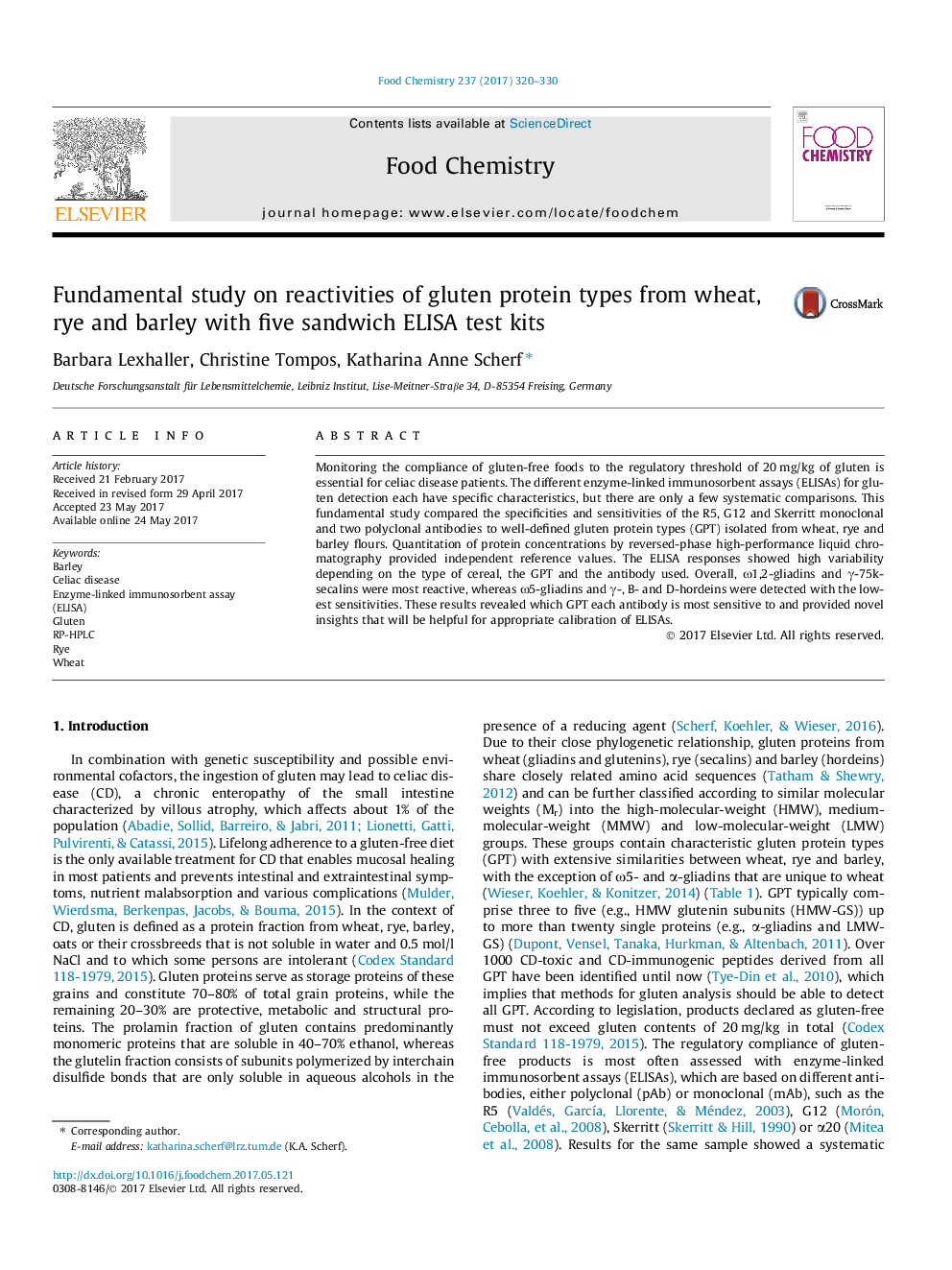| Article ID | Journal | Published Year | Pages | File Type |
|---|---|---|---|---|
| 5132729 | Food Chemistry | 2017 | 11 Pages |
â¢Gluten-free foods for celiac disease patients must not exceed 20 mg/kg of gluten.â¢Reactivities of five antibodies (R5, G12, Skerritt, two polyclonal) were studied.â¢Gluten protein types isolated from wheat, rye and barley flours served as antigens.â¢Ï1,2-Gliadins and γ-75k-secalins were highly reactive to all antibodies, except one.â¢Ï5-Gliadins and γ-, B- and D-hordeins were least reactive overall.
Monitoring the compliance of gluten-free foods to the regulatory threshold of 20 mg/kg of gluten is essential for celiac disease patients. The different enzyme-linked immunosorbent assays (ELISAs) for gluten detection each have specific characteristics, but there are only a few systematic comparisons. This fundamental study compared the specificities and sensitivities of the R5, G12 and Skerritt monoclonal and two polyclonal antibodies to well-defined gluten protein types (GPT) isolated from wheat, rye and barley flours. Quantitation of protein concentrations by reversed-phase high-performance liquid chromatography provided independent reference values. The ELISA responses showed high variability depending on the type of cereal, the GPT and the antibody used. Overall, Ï1,2-gliadins and γ-75k-secalins were most reactive, whereas Ï5-gliadins and γ-, B- and D-hordeins were detected with the lowest sensitivities. These results revealed which GPT each antibody is most sensitive to and provided novel insights that will be helpful for appropriate calibration of ELISAs.
